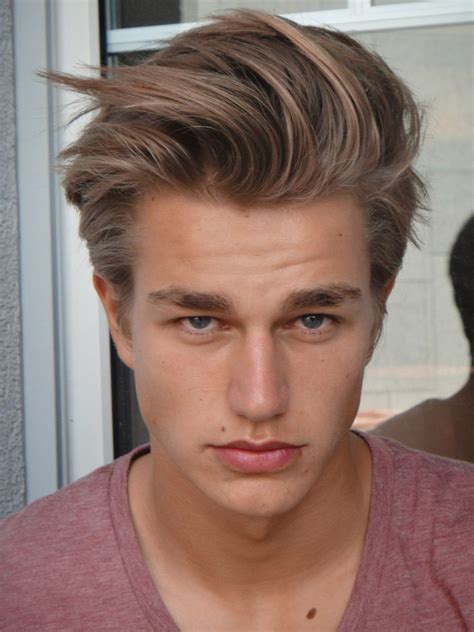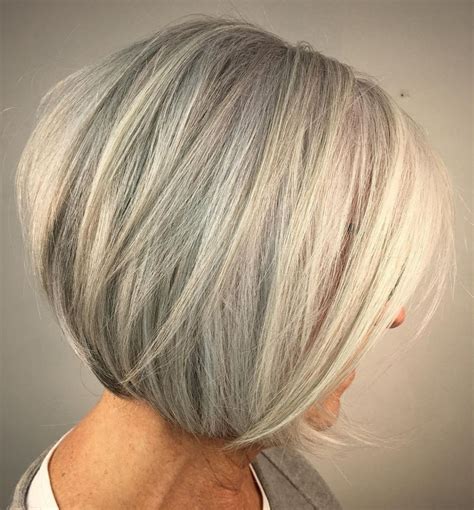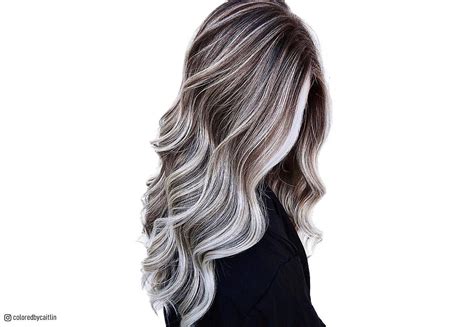Achieve smooth, sleek, and manageable hair with chemical, heat, or natural hair straightening processes. Learn about the inputs, developments, and results.
Chemical Hair Straightening
Contents
- 1 Chemical Hair Straightening
- 2 Input: Process & Products Used
- 3 Development: Effects on Hair Health
- 4 Result: Smooth & Straight Hair
- 5 Heat Hair Straightening
- 6 Input: Tools & Techniques
- 7 Development: Impact on Hair Texture
- 8 Result: Sleek & Manageable Hair
- 9 Natural Hair Straightening
- 10 Input: Ingredients & Application
Chemical hair straightening is a popular treatment for those looking to achieve smooth and straight hair. This process involves the use of chemical products to alter the structure of the hair, resulting in a sleek and manageable look.
During the input stage of chemical hair straightening, powerful chemical products such as keratin-based solutions or sodium hydroxide are applied to the hair. These products work to break down the hair’s natural bonds, allowing it to be reshaped into a straighter form.
The development stage of chemical straightening involves the use of heat from a flat iron or a blow dryer to lock in the straightened shape of the hair. This process can have a lasting impact on the texture of the hair, making it more vulnerable to damage and breakage.
As a result, chemical hair straightening treatments can leave the hair smooth and straight. However, it’s important to note that the chemical products used in this process can also have detrimental effects on hair health, often leading to dryness and fragility.
Input: Process & Products Used
When it comes to chemical hair straightening, the process involves the use of specific products and techniques to achieve the desired results. The products used in this treatment typically include a straightening solution, a neutralizer, and other conditioning agents. The process begins with the application of the straightening solution to the hair, which breaks down the hair’s natural protein structure. This allows the hair to be reshaped into a straighter form.
During the heat hair straightening process, the input involves the use of various tools and techniques to achieve the desired look. The tools commonly used for this treatment include flat irons, blow dryers, and heat protecting products. The technique involves applying heat to the hair in a controlled manner to relax the natural curl pattern and create a straighter appearance. This process is often repeated several times to ensure smooth and sleek results.
For those seeking natural hair straightening alternatives, the input involves the selection of specific ingredients and the careful application of these products to the hair. Common natural ingredients used for this process include coconut milk, lemon juice, and aloe vera gel. These ingredients are applied to the hair and left to sit for a period of time before being rinsed out. The process may need to be repeated multiple times to achieve the desired level of straightness.
In summary, the input for each type of hair straightening treatment varies depending on the specific process and products used. Whether it be a chemical, heat, or natural treatment, it’s important to carefully consider the potential effects on the hair’s health and texture before deciding on a treatment option.
Development: Effects on Hair Health
Chemical Hair Straightening treatments involve the use of strong chemicals to permanently alter the structure of the hair. The process begins with the application of a chemical solution to break the bonds in the hair, followed by the use of heat to reshape the hair into a straighter form. While this results in smooth and sleek hair, it can have detrimental effects on the health of the hair.
Excessive use of chemical straightening treatments can lead to hair becoming dry, brittle, and prone to breakage. The intense chemicals used in the process can strip the hair of its natural oils, leaving it damaged and in need of intensive repair. Over time, the repeated use of these treatments can also lead to thinning of the hair and even hair loss.
Furthermore, the process of chemical straightening can also cause irritation to the scalp and allergic reactions in some individuals. The strong chemicals in the treatment can lead to scalp sensitivity and inflammation, resulting in discomfort and potential long-term health issues.
In contrast, natural hair straightening treatments utilize organic and natural ingredients to achieve the desired straightening effect. These treatments are gentler on the hair and scalp, reducing the risk of damage and irritation. By opting for natural hair straightening methods, individuals can maintain the health of their hair while still achieving smooth and manageable results.
Result: Smooth & Straight Hair
Chemical hair straightening treatments are a popular choice for those looking to achieve smooth and straight hair. These treatments typically involve the use of strong chemicals such as formaldehyde or sodium hydroxide to break the bonds in the hair and create a permanent straightening effect.
One of the most common types of chemical hair straightening is the Japanese straightening method, also known as thermal reconditioning. This technique involves applying a specialized solution to the hair, followed by the use of a flat iron to lock in the straightness. The result is smooth, straight hair that can last for several months.
Another popular chemical straightening treatment is the Brazilian blowout, which uses a combination of keratin and other ingredients to smooth and straighten the hair. This treatment also provides long-lasting results, leaving the hair looking smooth and straight for weeks or even months.
It’s important to note that chemical hair straightening treatments can have a significant impact on the health of the hair. The strong chemicals used in these treatments can cause damage and breakage, so it’s essential to follow up with proper hair care and maintenance to keep the hair looking smooth and straight without compromising its health.
Heat Hair Straightening
Heat hair straightening treatments involve the use of heat styling tools such as flat irons or straightening brushes to achieve sleek and straight hair. These tools typically reach high temperatures in order to effectively alter the hair’s natural texture.
One commonly used heat hair straightening technique is the use of flat irons, which are designed to quickly straighten the hair by applying heat from ceramic plates. Another popular method is the use of straightening brushes, which utilize heated bristles to smooth out and straighten the hair.
While heat hair straightening can provide immediate results, frequent use of high temperatures can lead to damage such as dryness, breakage, and split ends. It is important to use heat protectant products and to limit the frequency of heat styling in order to maintain the health of the hair.
Despite the potential for damage, heat hair straightening can be a convenient and effective method for achieving sleek and manageable hair for those who prefer straight styles.
Input: Tools & Techniques
When it comes to heat hair straightening, the input primarily consists of tools and techniques that are used to achieve sleek and manageable hair.
The key tool in this process is a high-quality flat iron, also known as a hair straightener. This specialized device is designed to apply heat to the hair in a controlled manner, effectively straightening the hair strands with precision.
As for the techniques involved, it is essential to properly section the hair before using the flat iron. This ensures that each strand receives equal heat distribution, resulting in a uniformly straightened look. Additionally, using the right heat protection products is crucial to minimize damage and maintain the hair’s health.
Overall, the input of tools and techniques plays a significant role in the heat hair straightening process, ultimately contributing to the sleek and manageable hair that many individuals desire.
Development: Impact on Hair Texture
When it comes to hair straightening treatments, the impact on hair texture is a crucial factor to consider. From chemical hair straightening to heat hair straightening and natural hair straightening, each treatment method has a different effect on the overall texture of the hair.
In chemical hair straightening, the products used contain strong chemicals that alter the hair’s natural structure. These chemicals break down the bonds within the hair shaft, allowing it to be reshaped into a straighter form. While this results in smooth and straight hair, the development process can leave the hair feeling brittle and damaged, affecting its texture.
On the other hand, heat hair straightening involves the use of tools and techniques such as flat irons and blow dryers to straighten the hair. The intense heat from these tools can have a significant impact on the hair’s texture, often resulting in dryness and frizz. However, with proper heat protection and conditioning, the hair texture can remain sleek and manageable.
For those looking for a more natural approach, natural hair straightening methods utilize ingredients and applications that are gentler on the hair. These treatments typically aim to relax the natural curl pattern of the hair without causing significant damage to the texture. Instead, natural hair straightening treatments can leave the hair feeling soft and more natural.
Result: Sleek & Manageable Hair
After undergoing heat hair straightening treatment, the primary result that everyone desires is to have sleek and manageable hair. This treatment uses various tools and techniques such as flat irons and blow-dryers to straighten the hair by altering its natural texture. The end goal is to achieve straight, smooth, and frizz-free hair that is easy to style and maintain.
When the heat is applied to the hair, it effectively reshapes the protein bonds within the hair shaft, leading to a sleek and straight appearance. The use of high heat can also temporarily seal the hair cuticle, resulting in a smoother texture and added shine. This makes the hair more manageable and less prone to frizz and flyaways.
However, it is crucial to understand that while the result of sleek and manageable hair is achieved through heat hair straightening, it is essential to use heat protectant products to minimize damage from the high temperatures. Additionally, regular conditioning and moisturizing treatments are necessary to maintain the health and vitality of the hair.
Overall, the result of sleek and manageable hair from heat hair straightening is highly sought after by individuals with curly, wavy, or frizzy hair textures. It provides a convenient way to achieve a polished and effortless look, making daily hair styling routines much simpler and more efficient.
Natural Hair Straightening
Natural hair straightening treatments are becoming increasingly popular as people seek healthier alternatives to chemical-based products. These treatments use all-natural ingredients and techniques to achieve smoother and straighter hair without the use of harsh chemicals.
One common natural hair straightening method involves the use of coconut milk and lemon juice applied to the hair and then left to sit for a period of time before being rinsed out. This process is believed to help straighten the hair and also promote hair growth and improve overall hair health.
Another natural hair straightening technique involves the use of aloe vera gel and olive oil as a hair mask. This treatment is said to help condition and moisturize the hair while also straightening it naturally.
Henna is another popular natural hair straightening ingredient, which has been used for centuries in various cultures to naturally straighten and color hair. When mixed with other natural ingredients such as egg and yogurt, henna is believed to provide natural straightening effects as well as nourish the hair.
Input: Ingredients & Application
When it comes to natural hair straightening, the ingredients and application play a significant role in achieving the desired results. Unlike chemical and heat hair straightening treatments, natural hair straightening methods rely on organic elements such as coconut milk, lemon juice, and aloe vera. These ingredients are known for their nutrient-rich properties that help in conditioning and smoothening the hair.
One of the most common ingredients used in natural hair straightening is coconut milk. This natural moisturizer is packed with essential fatty acids that can penetrate the hair shaft, resulting in soft and manageable hair. In addition to this, the application process involves mixing the coconut milk with lemon juice and leaving it on the hair for a specific period to aid in straightening and conditioning.
Another key ingredient used in natural hair straightening is lemon juice. This citrus fruit is known for its acidic properties that can help to relax the hair cuticles, resulting in straighter hair. The application process generally involves mixing the lemon juice with coconut milk and applying it to the hair, followed by rinsing and drying for the best results.
Lastly, aloe vera is another significant ingredient used in natural hair straightening. Its moisturizing and conditioning properties help in maintaining hair health while promoting straightness and smoothness. The application process involves mixing aloe vera gel with other natural ingredients and applying the mixture to the hair, allowing it to sit for a period before rinsing for the desired effect.










